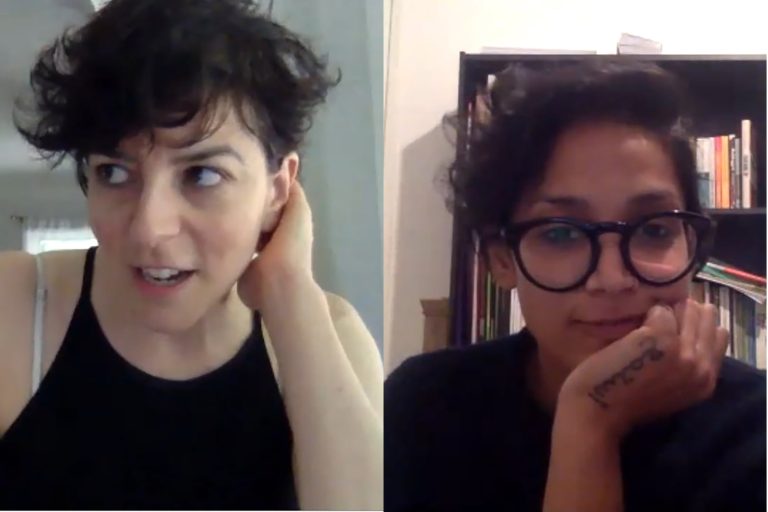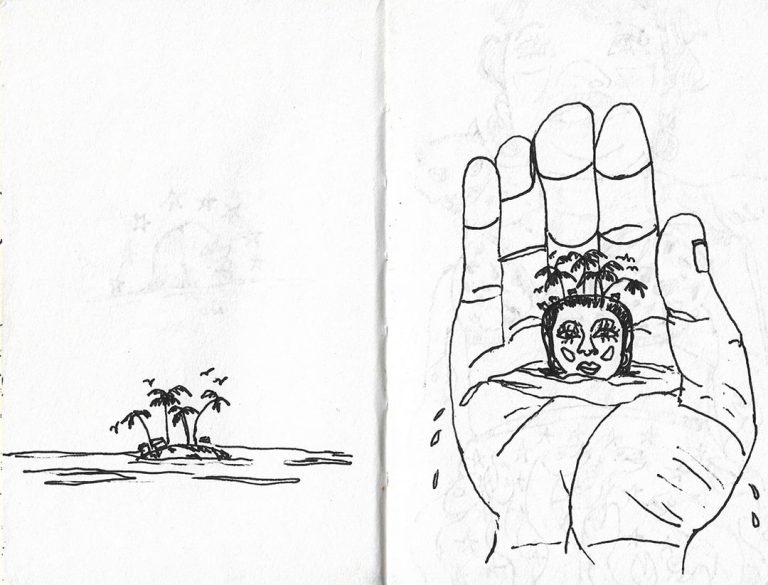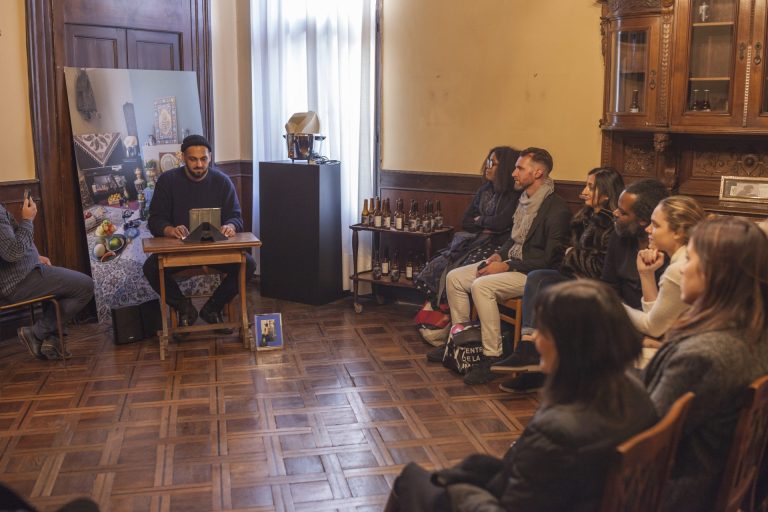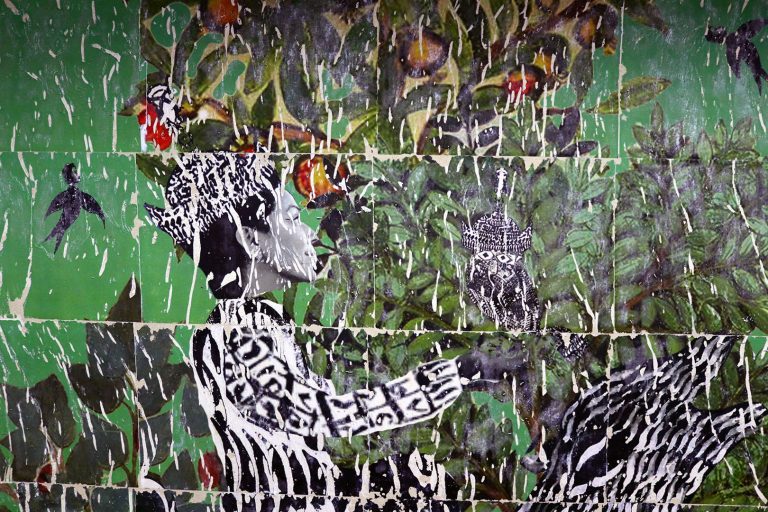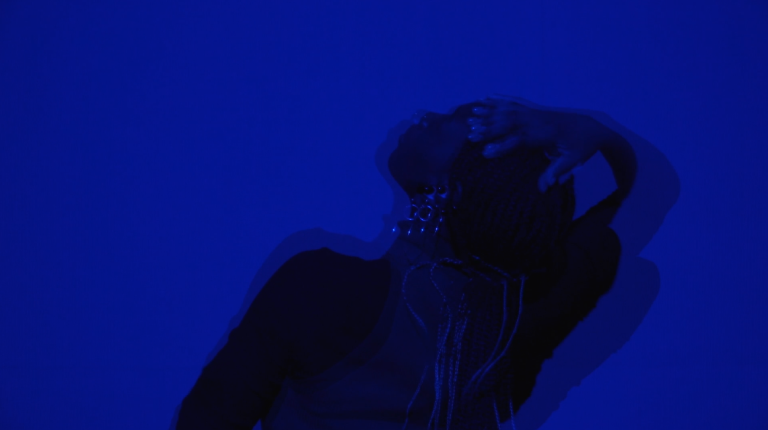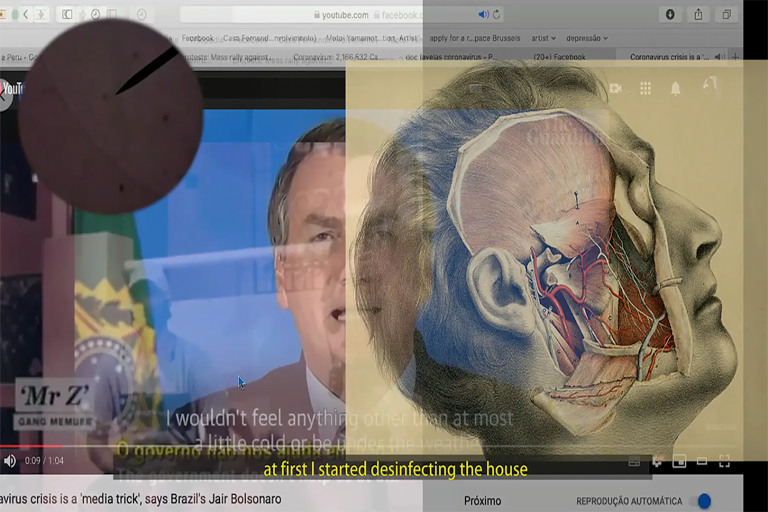Kashif Nadim Chaudry: Diaspora Pavilion 2 Artist in Conversation (Transcript)
5 Apr 2021
People:
Project:
Location:
Online
Artist Kashif Nadim Chaudry speaks with curator Mikala Tai about his practice and participation in the upcoming exhibition ‘I am a heart beating in the world: Diaspora Pavilion 2, Sydney,’ which will be presented by International Curators Forum in partnership with 4A Centre for Contemporary Asian Art in 2021.
Watch Video
_________________________
Mikala Tai: Hello, I’m Mikala Tai, the Director of 4a Center for Contemporary Asian Art in Sydney, Australia. Ahead of our 2021 exhibition, Diaspora Pavilion 2, ‘I am a heart beating in the world,’ my co-curators Adelaide Bannerman and Jessica Taylor and I have been talking to our exhibiting artists today.
I chat with Kashif Nadim Chaudry, a Nottingham, UK-based artist. Nadim’s works are predominantly underpinned by an investigation of textiles. He crafts fabric into large-scale installations that envelop the viewer and often surprise them. Today Nadim and I chat about beauty, the need to collect, the heritage of textiles, Sufism, and what he has in store for Sydney.
It’s great to talk about your work and it’s very special for some Australian viewers to get a sneak peek at your practice and what you’re thinking about. I think one of the most important things about being part of Diaspora Pavilion 2 is to talk about your immediate response to the word diaspora and what that means to you.
Does it have any kind of sharp emotions? Have you had a long-term relationship with this? Has your relationship to the idea of it, and your identification with it or alongside it or against it, has it changed and morphed over time?
Kashif Nadim Chaudry: I think my initial reaction to diaspora has always been one of anger. In terms of where I’m positioned – I was born in the UK, in England, along with my generation. My parents were born in Kenya. My grandparents originally came from India. So, they were part of an East African kind of exodus. This was before partition as well. So, they chose to move to Kenya because it was also a British colony. But then they chose to leave Kenya because of problems with Uganda, and then they came to the UK. So, with diaspora, there’s always a sense of belonging to an elsewhere, to somewhere else, and not the place where you actually are born. And for me that, that built up an anger a little bit.
The same with the word home as well. I think that I don’t really like the word home. I think more in terms of homeliness, which is something that you can cultivate and something that you can curate, if you want to use that word. Although even curation, I’m finding quite problematic at the moment, if I’m perfectly honest. But Diaspora 2 is about that sense of when someone says to you, ‘where do you come from?’ ‘Well, I come from England. I was born in England.’ ‘Yeah but where do you come from?’ That kind of thing just makes me angry.
Mikala Tai: Yeah, I think the experience of being asked where you come from repeatedly throughout your life, it does do something to change your gene pattern, it becomes etched in you that you have a kind of a physical response to that. But when I looked at your work – and you’ve got such a prolific and long-standing investigation into objects in conversation and in dialogue with each other – and we were just talking before we started to record about how I look at your works as an idea of a collection. And they kind of collect these different things from different places. And when we think of the term diaspora, maybe that is what we kind of asked after – the extension of a lived experience and the collection of different things, and sometimes you work with some things for a period and they drop away, and then others come in. Is that how you approach your work, that you kind of move in and around and with objects?
Kashif Nadim Chaudry: So, in terms of diasporic thinking – if you think about the idea of your identity not being place bound, essentially that you’re citizens of a planet, citizens of the world – in a similar way, my creativity is drawn from many different places, especially historical cultures. I was born in a Muslim family. I’m not a practicing Muslim, but I’ve always been fascinated by the history of Islam, especially different kind of Empires across the planet historically – the Mughal Empire in India, the Safavid’s in Iran. And also, things like biology, I studied biology. I love gardening. I love the way in which plants grow, the language of flowers – that’s fascinating as well. So, I draw on many different things. And in that respect, the works are – to use a textilian term – are like tapestries bringing together a lot of threads. And I hope that gives the pieces a richness as well.
Mikala Tai: I like works that demand a lot from their audience. On first impact with your work, they’re pretty fabulous, they’re compelling, there’s colour, there’s texture, it’s a bit of a riot of all these kinds of references at once. But as you start to unpick it, you have to spend some time reading these objects. What does this mean? What does it mean if these two things are next to each other and these textures of talking to each other? How do these references come together? And I think that’s the most exciting part of your work, the real work you had to do as a viewer to think about and consider how these different references – and they could come from a religious history, they could also be something that’s more contemporary – but they’re sitting there together. And what does that mean right now to have these very disparate dialogues backing up against each other?
Kashif Nadim Chaudry: Well, the bottom line is that I want to make work that excites me. And I think the thing that’s always been fundamental in my mind is the idea of beauty. And I think that beauty can be quite transgressive. I think it can just turn people off in a way because it’s considered decorative or it doesn’t have the kudos, as say minimalism, for example.
One of the artists that I really admire and I’m in awe of is Mona Hatoum. And she also talks about how the first thing she wants, when people see her work, is a visceral experience before then unpicking what’s going on behind it. But she is an absolute genius at minimalism, she’s able to do that with one material, one form or one shape. But I’m not like that. I can’t do that. If I think about my South Asian heritage, it’s a very colorful heritage, when you think about the fabrics. The things that influenced me as a child were the clothes that my mom and the female relatives in my family wore, they had pink, purples and all sorts of colors. So, I want to draw that into the work because that’s what I like, that’s what fascinates me.
Mikala Tai: This line that’s very special, and it only happens with textiles because we’re so familiar with what the feeling of a textile is. We don’t even need to touch a work, but we can imagine the softness, the rippling of a sequin, or anything like that. And that is something that comes from our physical understanding of objects that we can read into your work. And that doesn’t happen with many other things. I think that’s what minimalism doesn’t get, because you can never touch those shiny things, you know?
Kashif Nadim Chaudry: No. You’re right. And I think one of the reasons why is the degree I studied on was called textiles. It was essentially a final degree, but it started with textiles and fabric and cloth as your starting point for investigating. And the reason why I went on that specific degree is because textiles are ubiquitous. They’re everywhere. We sleep in them, we wear them, we clean houses with them, they’re for ceremonies, they’re for death, for marriage and in that respect, they’re so full of meaning. They’re endless meaning.
Mikala Tai: So maybe we should talk a little bit about the work you’re making for the next edition of the Diaspora Pavilion in Sydney. How have these kinds of elements been drawn into this work that you’re now working on?
Kashif Nadim Chaudry: So, the piece is called Cabal. It’s the second work I’ve made which has that title. I’m really fascinated by that title. The Cabal, just for reference, is a secretive group, either a political group or religious group, but it’s a gathering of people and it’s very exclusive and also quite inclusive as well. It usually has a kind of malevolent feeling to it, a political intrigue or something like that. And this work I’ve made is based around the Whirling Dervish. So, you have this conical shape, which is based on the skirt of the Whirling Dervish. But the Whirling Dervish is very much a singular experience. The Whirling Dervishes are Sufi Muslims, and Sufi Muslims believe in the idea that if God made all things, then God is within all the things as well. So, they try to connect with the divide within themselves and the Whirling Dervishes do that by spinning around, around and around. And in that respect, I guess, you can call it a very liberal expression of Islam because it’s about everyone finding their own journey to the divine.
But in this instance, the Whirling Dervish is multiplied – there are 160 pairs of Ken doll legs at the bottom [of the work] so there are 80 people underneath this skirt, having a whale of a time. But the whole point is that because you only see a part of their legs, you don’t see all of them – there is something that’s hidden, there’s something that’s secret – and that is essentially where the Cabal element comes into it. You’re excluded from whatever’s going on there. But also, there’s a sense of inclusion because whatever is going on, we don’t have an idea of what that is. In short, that’s part of what the work is about.
Mikala Tai: And it does also incorporate the idea of movement, constant movement, or the idea that you can reach some kind of understanding or something happens in your brain when you are moving and through that kind of repetitive motion, you can reach ideas or you can reach a new sense of being.
Kashif Nadim Chaudry: We’ve touched on home a little bit, well homeliness – and when I feel at home is when I’m on the sewing machine, which is just over here. [Nadim gestures to another place in his studio] And I made something like 200 plus leaves that are all individually appliqued, which sit on the piece and just going through that process of making one after the other, after the other. It’s fantastic – you do lose yourself in this repetitive action, which again is similar to the Whirling Dervish.
There is an Iranian artist called Shirazeh Houshiary, whose work I absolutely love, and she made these paintings, these drawings in 1990’s of Islamic prayers that she just wrote over and over and over and over again. And she talked about that repetitive process, that aesthetic process, as being a way to connect with something much deeper, whatever that might be.
Mikala Tai: I think with sewing and textiles, you’re again connected with that whole history of cloth, of tradition, of what people have made and made for others. People that sew, didn’t just sew for themselves, they’ve sewn for and they clothed many people. I think it’s really important that that’s embedded within our cultures and our understanding of what that materiality is.
Kashif Nadim Chaudry: My introduction to textiles came through my mum, who is a tailor and both of her parents were tailors, as well. So, part of the reason why my grandparents left to go to Kenya is because my grandfather, he was a master tailor for the British army, and so that heritage with fabric runs through all of my work. But when you talk about making for other people, I’m also currently making masks. So, if anyone wants to buy any, just get in contact.
Mikala Tai: The idea of an artist making, it is kind of meditative, it is an extension of that idea of the Whirling Dervish, because he’s such a fantastical character in the whole world history and the idea that it holds this kind of almost hypnotic, but so connected to thinking in the body and the brain really, sort of talking together – it’s a really amazing performance. How did you first decide you wanted to work with that concept?
Kashif Nadim Chaudry: I remember as a child, we had a family butcher who was very good friends with my dad and whenever I would go, the butcher would always call me Sufi. And that was something that stuck with me, I’ve just been very fascinated by that. I think maybe because I’m a deep thinker, maybe that’s part of where it comes from. But it’s just such a mesmerizing performance. I’ve never actually seen the Whirling Dervishes in the flesh, but I think I would find it quite a mesmerising thing, it is quite a mesmerising thing.
I used the Whirling Dervish in an exhibition that I had a couple of years ago as well. And in that instance, I made these conical shapes, which went from floor to ceiling and then kind of stuck within the gallery walls. I was interested in interrupting that connection with the divine, whatever that might be, and actually these forms, they had an ass sticking out with each one. So, the idea was that the Dervishes were shamed or revealed somehow.
And similarly with this piece as well, the fact that it is considered such a singular journey, this is a – I’m going to use the word clusterfuck, whether you can put that in here or not I don’t know – but that’s essentially what this is and it interrupts what’s going on there. And because they all are Ken doll legs, it’s very much a queer clusterfuck as well, so I’m flying the flag a little bit as well.
Mikala Tai: I think that’s what’s so great about your work, is that it does fold in all these aspects of what you’re fascinated with, what you’re curious about and what you’re currently identifying with as well, into these objects for the viewer to identify and unpick. And I’m really excited to see how people will respond to that in Australia, where South Asian artworks are still not prolific. We’re not seeing many contemporary works displayed within that museums as of yet, there is change, but it’s slow. And within “normal” cultural mainstream vernacular of the arts, people still are not really that knowledgeable about these kinds of huge artistic heritages we’ve got in somewhere like South Asia. And your work is really – and it comes back to that idea of beauty – you have that ability to hypnotize everyone into wanting to know more, to go back and maybe start from this contemporary piece, but then go back in and see where it’s come from. And that’s pretty powerful stuff to happen in 2020 when everyone’s doing a lot of homework to understand and become more empathetic to the globe.
Kashif Nadim Chaudry: Thank you. That’s a really lovely reading. I think in terms of the idea of being mesmerised, one thing that I would talk about is movement – this is a kinetic piece. And we all move -that’s part of what we do as being humans – but I’m really fascinated by, firstly, Victorian automaton and the way in which Victorian automaton can have a small movement that’s repetitive. And on the one hand, it’s quite mesmerizing, but it can also seem quite threatening and quite sinister as well, it can be quite comedic. They’re toys essentially. And I see this piece as a kind of toy, a large toy – and with toys because they’re so bound up with childhood innocence, when you take them into the realm of the doll, they can be quite powerful.
And this work looks specifically at the queer part of my life, whatever that might be, however that colors other elements of my life as well. I’m not going to call myself a queer artist, but I’m interested in making work, which looks at being queer, what that is. And there is – I know because I’ve talked to other gay friends about this – there is a sense of, even as a child, even before coming out to people, just being very aware of how you are in the world, being aware of how you look. So that’s always been something that I’ve been very conscious about. And so, bringing movement into my work, I think there’s a way of somehow exorcising some of those experiences I had from childhood.
Mikala Tai: There’s something amazing about things that harp back to childhood toys and there’s some kind of power that they have over all of us, even someone calling you Sufi when you were so young, having that really – how many years later – still be at the core of how you anchor yourself. And that’s one of the other things I found quite interesting in your work, is they feel like new forms or new contemporary anchors into how we understand ourselves as contemporary beings that aren’t singular – we’re not from one place, we’re not identifying from within one border or nationality necessarily.
And the new ways of thinking or the new futures that we have to imagine and are actively imagining right now and building hopefully post-COVID and post this whole kind of shift is something that is not fixed. It is moving and it is unstable. And how do we embrace things that are like that?
Kashif Nadim Chaudry: I’m very excited about having the work in Australia, it will be the first time I’ve had the opportunity to show internationally and I’m excited to see what people make of it. I’m excited to see what references people come up with.
Mikala Tai: We’re excited to have it here. I’m just so sad it’s taking so long.
Kashif Nadim Chaudry: As long as it gets there, as long as it happens, that’s the main thing.
Mikala Tai: It’s going to happen. Thanks so much for chatting today. It’s really a great honor to be able to have this window into your fantastic studio, you look very tidy.
Kashif Nadim Chaudry: It’s my pleasure. Thank you for the interview. Thank you for talking.
Mikala Tai: I’m looking forward to seeing you soon when you get here.
Kashif Nadim Chaudry: Thank you. Me too.
_________________________
Disclaimer: Due to disruptions in the audio recording of the conversation there may be slight discrepancies in this transcription.
Explore Further
Explore Further
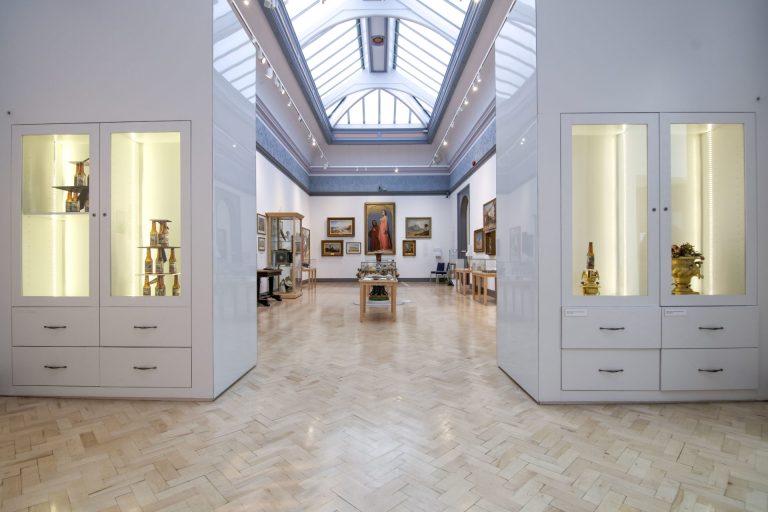
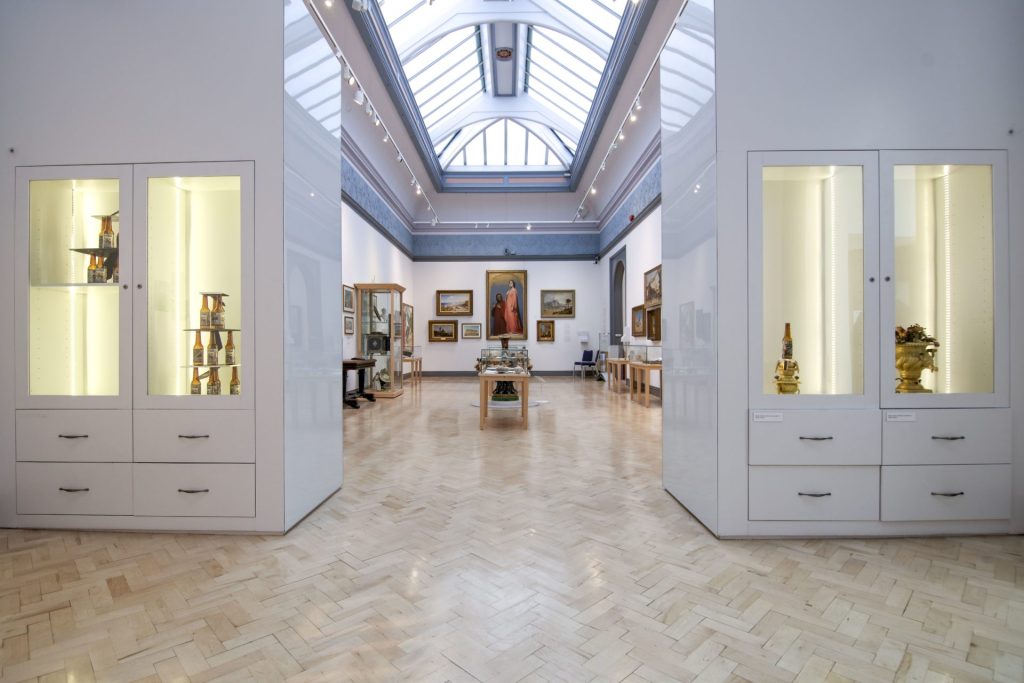
Diaspora Pavilion: Venice To Wolverhampton (Virtual Exhibition)
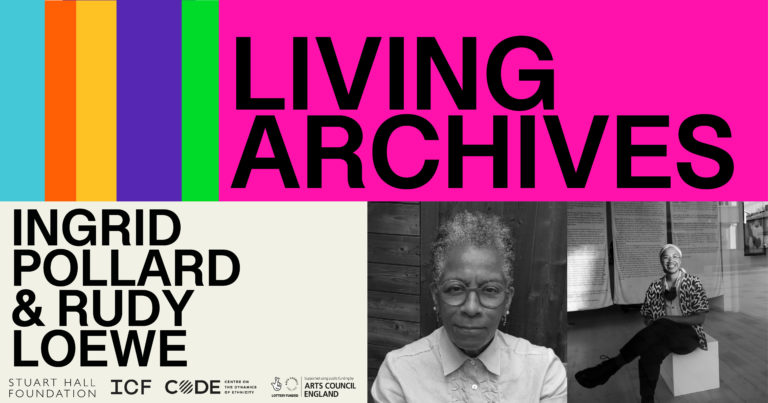
Living Archives Podcast Episode 1: Ingrid Pollard & Rudy Loewe


